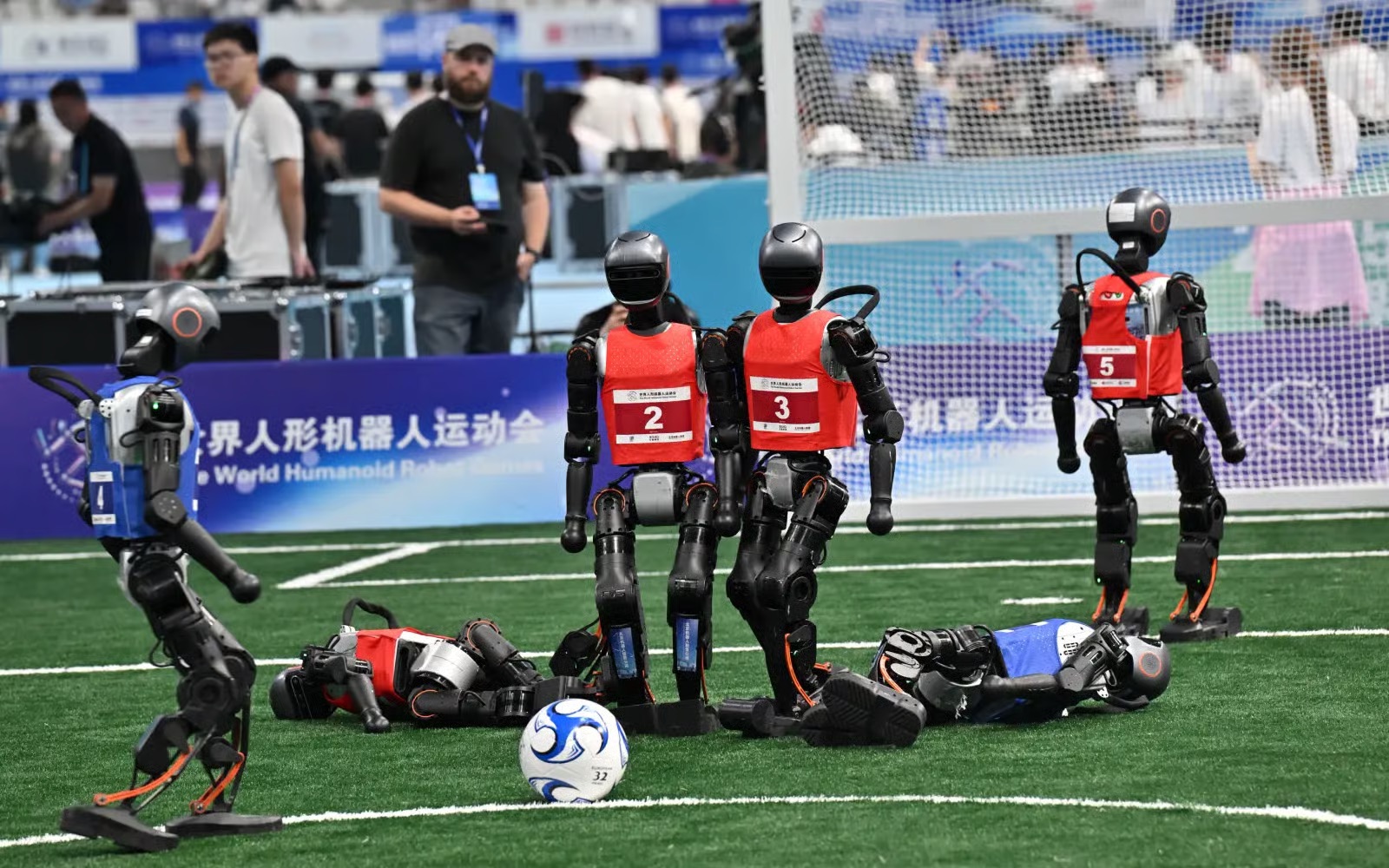
The first World Humanoid Robot Games wrapped up in Beijing on Sunday after a three-day competition that drew 280 teams from 16 countries, including the United States. Many teams used machines built by Chinese firms such as Unitree and Booster.
Events included dance battles, martial arts demonstrations, soccer matches, and track and field contests like the 400-meter, 1500-meter, and long jump. Robots also competed in tasks that mimicked real-life jobs, from stocking pharmacy shelves to cleaning hotel rooms.
Testing the Limits of Robot Abilities
During the soccer tournament, Guo Tong, programmer for Team Hephaestus, claimed that “robots have stronger joints and core strength.” Guo went as far as to predict that by 2050, humanoid robots could replace his idol Cristiano Ronaldo on the pitch.
Chinese Olympic boxer Li Yang echoed the sentiment while watching a robot boxing match. “Robots are easier to coach. Humans are emotional,” he told reporters.
The games also tested practical skills. One challenge required a robot to clean a mock hotel room and take out the trash, though referees noted that opening and closing doors remained a major hurdle for many teams.
Leading Companies on Display
Hangzhou-based Unitree, which has been positioned as a rival to Tesla’s Optimus robot, took home multiple medals. Other strong showings came from Beijing-based X-Humanoid and Shenzhen’s UBTECH, which is publicly traded in Hong Kong.
The Chinese government has identified humanoid robotics as a key growth sector, with a plan to establish a world-class industry by 2027. This event is part of a broader push to accelerate development, and Beijing has already scheduled a second edition of the games for next August.
For many participants, the games were not just about winning medals but also improving designs. Robot designer Wang Xidong said the event was crucial to testing performance and refining systems. “We are refining our robots,” he explained. “Everyone feels motivated to compete.”
What The Author Thinks
While these humanoid robots show incredible progress in sports and basic tasks, they still have a long way to go before replacing human talent. The fact that many struggled with something as simple as opening a door highlights the gap between hype and reality. The games are valuable for testing, but true human-level intelligence, adaptability, and creativity remain unmatched. For now, these competitions seem less about replacing humans and more about showcasing how far robotics has come—and how much further it still needs to go.
Featured image credit: FMT
For more stories like it, click the +Follow button at the top of this page to follow us.
